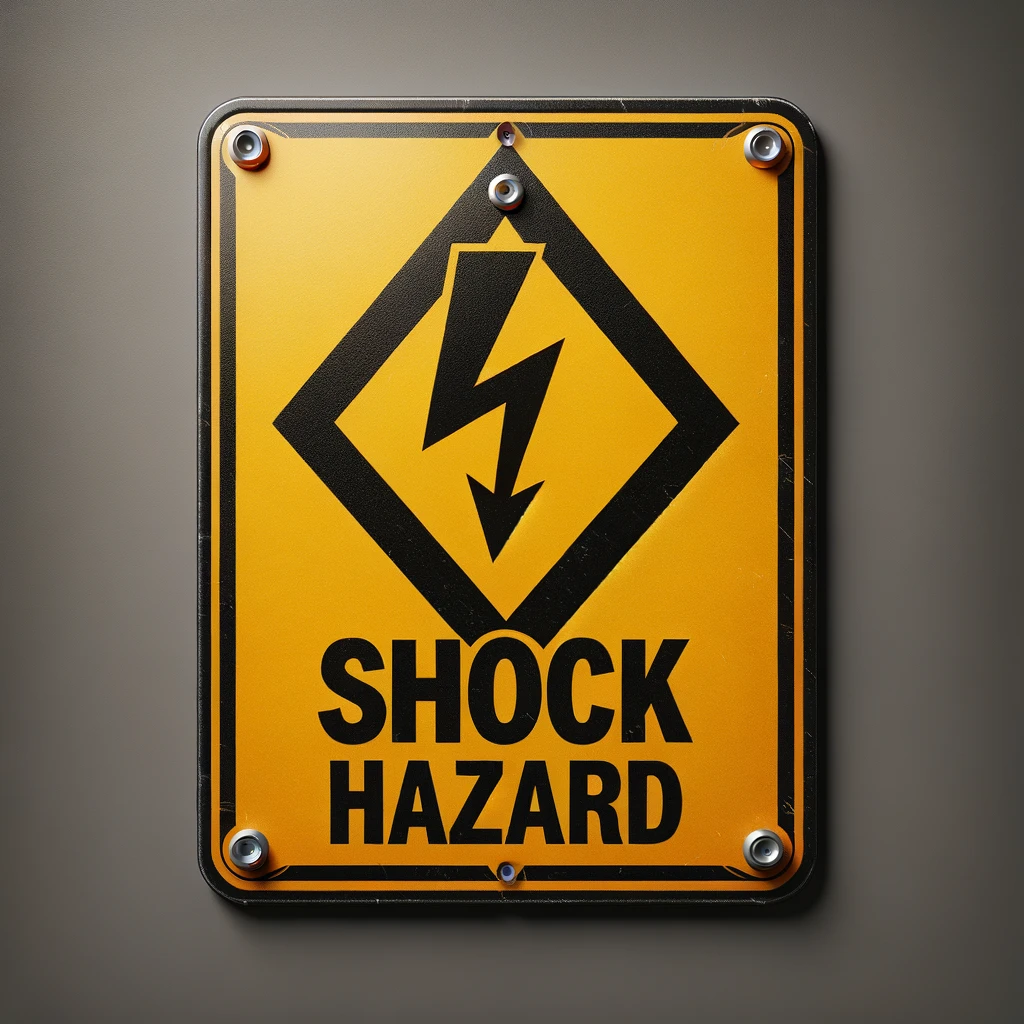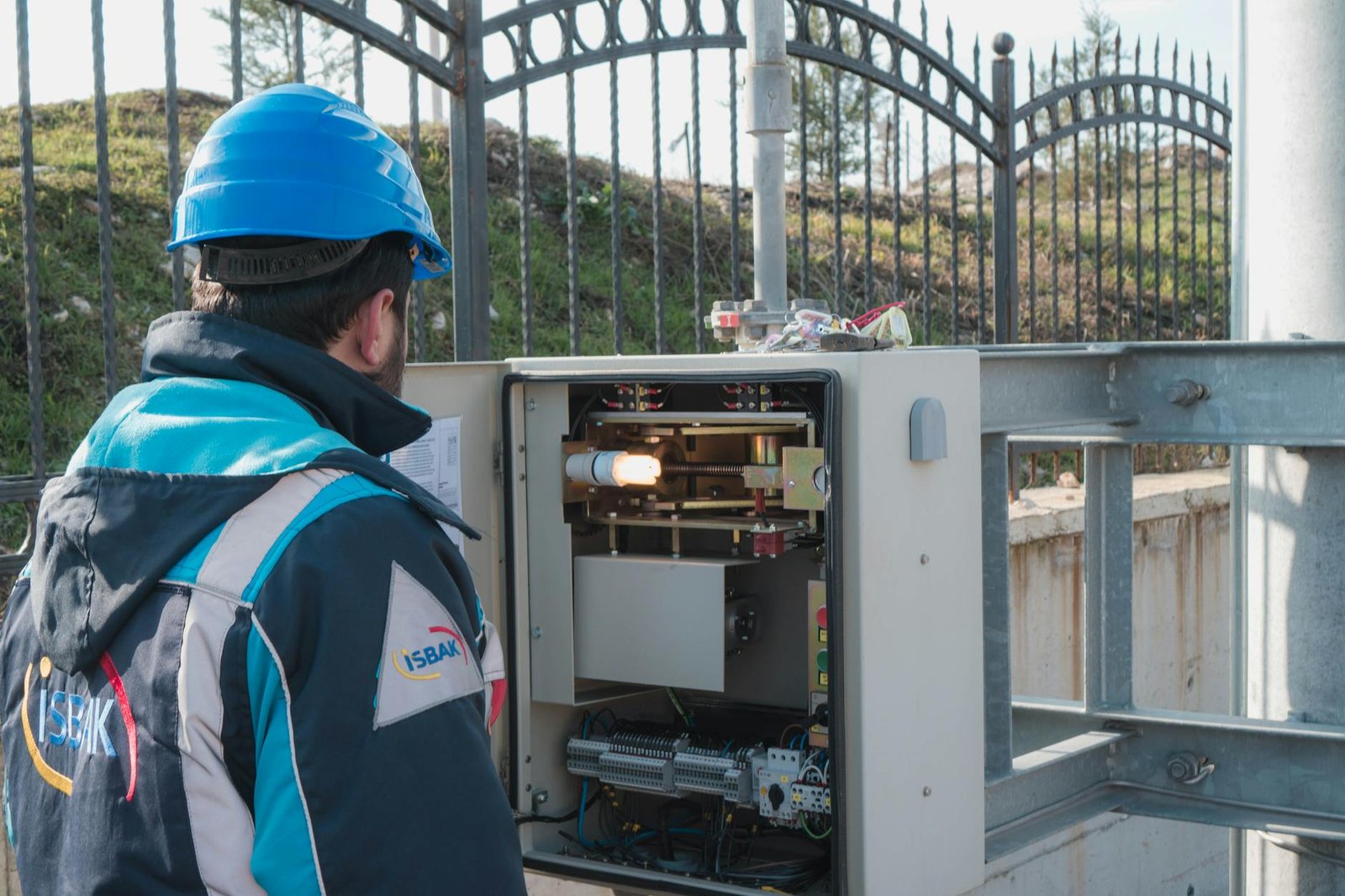Shock Warning: A Practical Primer
Did you know that there are over 2000 workplace fatalities due to electrical accidents annually?
This startling statistic emphasizes the critical need for a concept that seems simple yet can save lives: Shock Warning.
In the high-risk world of construction, understanding and correctly responding to a shock warning has significant implications for your personal safety and that of your colleagues.
So, what exactly is a “shock warning”? And how can you better equip yourself to deal with them in a construction environment?
In this comprehensive guide, we’ll introduce you to the world of shock warnings and study their importance in maintaining safety in a construction site.
Remember, staying safe does not happen by accident.

Table of Contents
How To Spot A Shock Warning
The Fundamentals of a Shock Warning
Conceptualizing a Shock Warning
Let’s break down this term – shock warning. In the arena of construction, the phrase “shock warning” is not about jolting your senses with a surprise, but rather an indicator of electrical safety.
To put it straight, a shock warning is a cautionary label or sign, which alerts personnel about potential electrical hazards in the immediate area. It prompts actions to circumvent harm and accidents.
The Place and Purpose of a Shock Warning
Necessity on a Construction Site
You might be wondering, where exactly would you encounter a shock warning in a construction site? The answer: just about anywhere there’s electrical equipment or high-powered machinery in use.
- Electrical panels and circuit breaker boxes
- Generators and power supply units
- Heavy machinery with electrical components
- Places where electrical work is currently underway
Priority of Safety
Safety is a non-negotiable priority in every construction project. A shock warning sign acts as a critical layer of prevention against accidental contact with electrical equipment carrying live current.
Recognize a Shock Warning
Read the Signs
So, how does a shock warning typically look?
Well, it varies, but all carry the same critical message. The signs are often vibrant yellow or orange, frequently with the universally recognized electrical hazard symbol — a bolt of lightning. The warning may be in a graphical or textual format, or both.
What’s Next After Spotting a Shock Warning
Actionable Measures
What should your immediate action be upon spotting a shock warning label? Here’s a handy guide to follow:
- Pause: Don’t ignore the warning. Instead, take a moment to assess the situation.
- Pay Attention: Make a mental note of the location and the warning’s specifics.
- Protection: Grab the appropriate safety gear if you must continue work in that area.
- Proceed: Continue with your task, keeping your safety and the safety of others paramount.
By now, the concept of a shock warning should be less of a mystery. Despite its simplicity, it is a robust tool for maintaining safety on construction sites, which can sometimes become a labyrinth of hazards. Understanding the shock warning sign and the actions it necessitates is a simple yet crucial step in fostering a safer workspace.

The Power Trio: Identifying the Three Primary Electrical Hazards
The Challenges of Electrical Safety
Understanding the Risks
Electricity – it’s the lifeblood of modern-day living. Yet, it packs a significant potential for danger, particularly in a working environment. Identifying the key hazards of electricity is the first stride towards mitigating them.
The Three Fearsome Faces of Electrical Danger
Electric Shock: The Hidden Shocking Reality
Let’s start with the most obvious hazard that comes to mind when thinking of electricity – the electric shock. It happens when electrical charge passes through the human body, with potential consequences ranging from minor discomfort to life-threatening injuries.
The severity of an electric shock primarily depends on two factors: the power of the electric current and the duration of exposure.
Electrical Burns: The Ignored Adversary
Electrical burns might not be the first thing that comes to mind when discussing electrical hazards, but they’re just as severe and commonplace.
When electrical current travels through body tissues, it generates heat that leads to burns. Electrical burns are severe and pose a critical health risk, often necessitating immediate medical assistance.
Electrical Fire Hazard: The Silent But Infernal Menace
Last but not least, the fire hazard. When faulty or overloaded electrical equipment heats up, it can trigger a fire. Electrical fires can be highly destructive, posing a severe risk to life and property.
How to Combat These Three Hazards
Effective Measures Against Electric Shock
Combatting the risk of electric shock can be achieved through several ways:
- Use of personal protective equipment (PPE).
- Regular safety checks.
- Familiarity with emergency procedures.
Preventing Electrical Burns: Proactivity Over Reactivity
Preventing electrical burns also shares similarities with the measures to combat electric shock:
- Utilizing insulated tools.
- Adhering to a lockout/tagout program.
- Following established safety standards.
Thwarting Electrical Fires: Awareness and Action
The key to preventing electrical fires lies in regular maintenance and the elimination of potential causes:
- Regular checkup of equipment.
- Avoid overloading circuits.
- Use of fire-resistant materials and fire extinguishers.
Each of these three hazards conveys its unique threats, requiring a distinctive safety response. By understanding their characteristics and knowing how to deal with them, we arm ourselves and our workplaces against the dangers posed by electrical mishaps.

The 120v Shock Alert: Understanding Its Impact
Unpacking the 120v Shock
Drawing the Power Line
To get a sense of a 120v shock, it’s important first to understand voltage. In simple terms, voltage is the force or ‘push’ that drives electrical energy through a circuit.
Standard household current in the United States is 120 volts. That force can be significant and bears potential dangers if not handled safely.
How 120v Shocks Happen
Pathways to Trouble
Specific conditions can expose people to risks of a 120v electrical shock. For instance, touching live wires, defective electrical devices, or even wet or damp areas near these can lead to a shock.
Understanding the Impact of a 120v Shock
The Physical Repercussions
The severity of an electrical shock from a 120-volt source varies based on factors such as the current’s path, duration of contact, and body’s resistance. Common symptoms include muscle contractions, skin burns, abnormal heart rhythm, or in severe cases, even death.
The Psychological Aftereffects
Apart from physical injuries, a person experiencing a severe electric shock may also face psychological trauma. This can include anxiety, panic disorders, or in some cases, post-traumatic stress disorder (PTSD).
Preemptive Action Against 120v Shocks
Cognitive Arsenal: Knowledge and Awareness
The best preventive strategy against 120v shocks is to be aware of the hazards and how electricity behaves. Here are some steps to reduce the risk:
- Be informed about electrical safety procedures.
- Avoid touching electrical appliances with wet hands or in wet areas.
- Ensure professional handling and regular maintenance of electrical devices.
Physical Armament: Tools and Utilities
Ensuring the proper tools and utilities are in place is crucial to your safety. This can include:
- Use of insulated tools and gloves when handling electrical systems.
- Installation of Ground Fault Circuit Interrupters (GFCIs) in household circuits.
- Regular inspection of electrical appliances for damage or defects.
Proactive attention to these precautions can significantly reduce the risk of experiencing a 120v shock. This isn’t just for professionals on the job, but for any individual dealing with 120v household power supplies.

Electrical Safety: The Smarter Approach
A Culture of Safety: Building a Shockproof Environment
Redefining “Safe Spaces”
Creating a culture of electrical safety involves everyone being aware of and committed to following proper safety practices.
In an ideal safe space, visible reminders like shock warning signs, circuit diagrams, and safety procedure charts would be on prominent display. Proactive steps like regular training, drills, and updates on safety consciousness should be made common and inclusive.
Entrepreneurship and Electrical Safety
Corporate Electric: E-Safety at Work
In a corporate setting, the management should take the lead in cultivating a strong culture of electrical safety.
The implementation of electrical safety is not limited to construction sites or industries but is applicable in every workspace with electricity use.
- Encourage employees to report potential hazards.
- Ensure adequate safety training and drills for all staff.
- Regular inspection and maintenance of all electrical equipment.
Freelance Electric: Individual Responsibility
For individuals or freelancers working from home, personal responsibility toward electrical safety is essential. Some steps that can be taken include:
- Regular check of all electrical devices for potential faults.
- Avoid overloading of sockets and circuits.
- Proper wiring and use of safety devices like GFCIs.
Regulation and Responsibility: Legislation and Personal Accountability
The Power of Law: Electrical Safety Codes and Standards
Compliance with local, state, and national guidelines for electrical safety is a critical legal requirement. These may cover aspects such as:
- Electrical system installation standards
- Safety norms for electrical equipment
- Inspection and maintenance schedules
Shock Absorption: Personal Responsibility for Electrical Safety
While legislative bodies and safety codes provide standards, each individual has personal responsibility for electrical safety.
At the end of the day, our behavior, decisions, and actions in relation to electricity use play a significant role in our safety from potential electrical shocks, and in particular, from risks like a 120v shock.

Zeroing in on Lethal Voltage: Drawing the Line on Safety
What Constitutes a Lethal Voltage?
Deciphering Dangerous Levels of Voltage
When discussing electrical safety, a common question that arises is, “What voltage is considered lethal?” The answer, unhelpfully, is that it depends.
Human susceptibility to electric shock can depend on a variety of factors—from the path the current takes through the body to the individual’s health condition, resistance, and more.
However, experts often cite 50 volts as a point of concern. Above this level, electrical shock becomes increasingly dangerous, and the risk of electrocution rises.
Lethality and Current: An Intertwined Relationship
While voltage may determine the severity of an electrical shock, it’s important to know that it’s not voltage alone that kills—it’s the accompanying current. Far more significant in terms of immediate harm to the human body is the amount of electric current—that is, the rate of flow of the electric charge.
It’s known that a current as low as 20-75 milliamperes can interfere with the heart’s electrical system, potentially leading to deadly consequences like cardiac arrest.
The Challenge of Identifying a Lethal Voltage
The Variability of Lethal Voltage
One of the challenging aspects of identifying a potentially lethal voltage is its variability. This ranges widely, depending on circumstances and individuals exposed.
Some individuals may withstand brief contact with high voltage levels and survive with minor injuries. In contrast, others might succumb to prolonged exposure to a relatively low voltage.
Mitigating the Risk of Lethal Voltage Exposure
Senses on High Alert
Always remain conscious of your environment, especially when working with or around electricity. Be aware of notices, labels, and warnings. Familiarize yourself with safety practices, and avoid any potentially dangerous activity unless you’re properly equipped and trained.
Safe Practices: Being Prudent with Power
Handling electricity, especially high-voltage equipment, requires specific precautions. Some top tips include:
- Use proper insulated tools and protective gear.
- Disconnect power sources before servicing or repairing equipment.
- Maintain a safe distance from power lines.
Emergency Preparation: A Crucial Component
Having emergency protocols in place in case of accidental contact with lethal voltage is just as important as preventive measures. This might involve:
- Training in first aid and CPR.
- Access to emergency contact numbers.
- Regular drills and safety briefings for all personnel.
By acknowledging the potential for danger and taking proactive steps to address it, we can significantly reduce the risk of lethal voltage exposure.

From Basic to Best: Enhancing Electrical Safety Practices
Beyond the Basics: Advancing Safety Measures
Striving for Safer Standards
While observing conventional safety practices is essential, we can further enhance our safety by striving for even higher standards.
This might involve adopting practices from industries that handle higher risk levels, participating in advanced training programs, or investing in cutting-edge protective equipment.
Leveraging Technology for Enhanced Safety
Tech and Safety: A Powerful Alliance
Incorporating technology can play a pivotal role in enhancing electrical safety.
This might mean using digital tools for risk assessment and monitoring, exploring the potential of artificial intelligence in predicting electrical failures, or even using Virtual Reality (VR) technology for safety training.
An All-Encompassing Approach to Safety
Promoting a Culture of Safety
Ultimately, a safer environment results from cultivating a robust culture of safety. It’s crucial to foster an environment where safety considerations are normalized, prioritized, and continuously improved upon.
Implementing these advancements may require effort and investment, but the potential benefits in terms of mitigating risk and enhancing personal and organisational safety make it well worth the endeavor.
Final Takeaways
So, there you have it. A shock warning is not merely a sign with an intimidating graphic or alarming text. It’s a vital aspect of safety protocol in the construction world, where the interplay of heavy machinery and electricity can create a treacherous terrain. It’s a cue for construction workers to pause, pay attention, gather protection gear, and proceed cautiously.
Whether it’s on an electrical panel, a generator, or heavy machinery with electrical components, its purpose is to provide an essential layer of safety. By learning to recognize and appropriately respond to these shock warnings, workers can prioritize their safety and minimize the risk of potentially shocking experiences on-site. The importance of these signals cannot be overstated, they are the unsung heroes casting an umbrella of safety over the construction sites every day.






